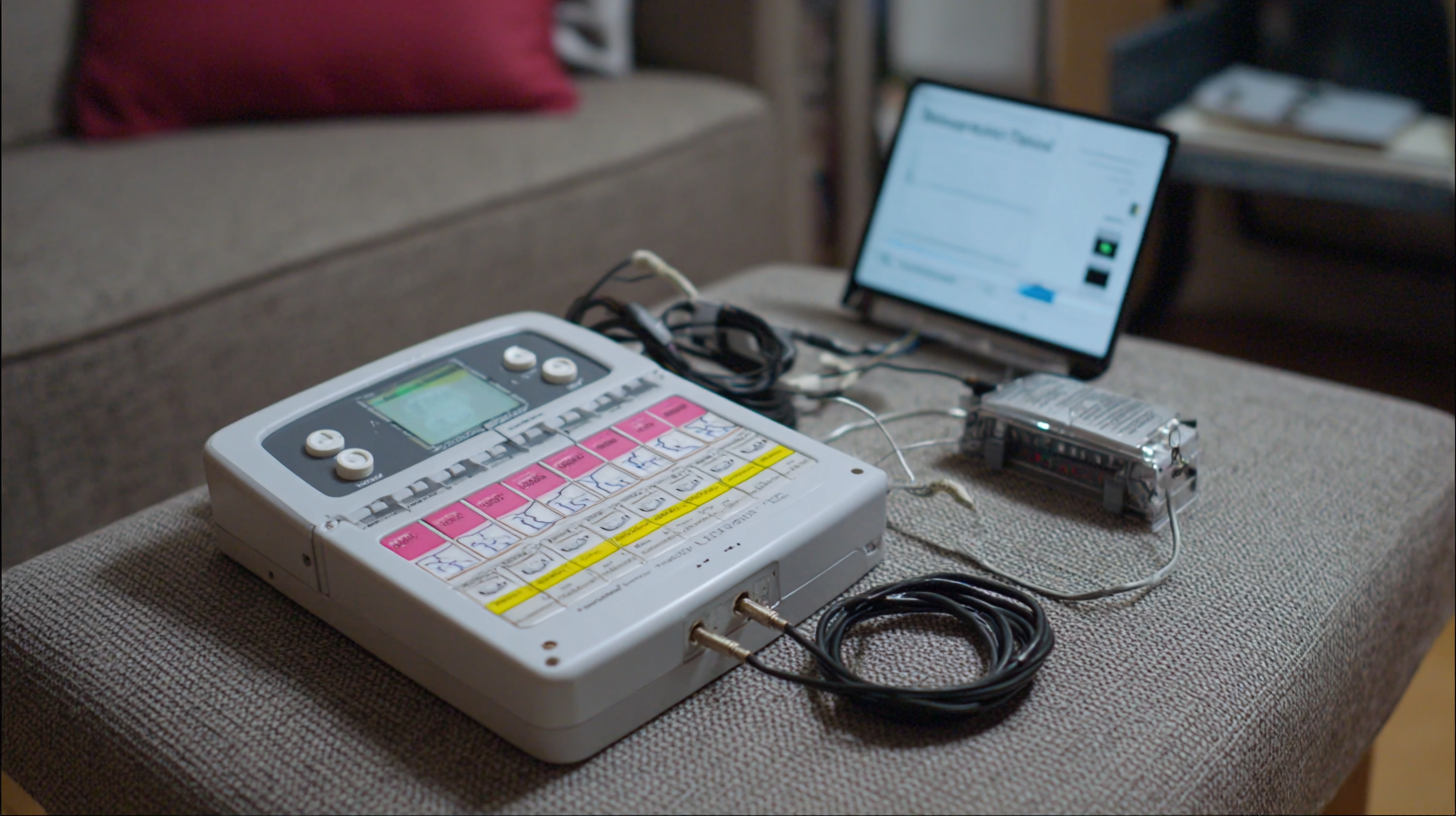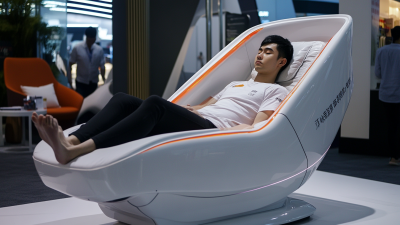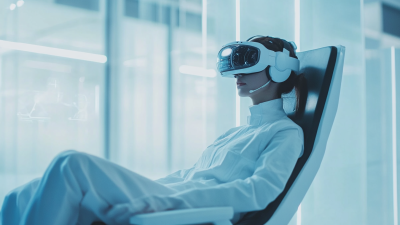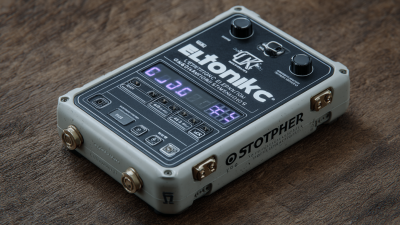Electrical stimulation devices have emerged as a transformative technology in the fields of rehabilitation, pain management, and neuromuscular stimulation. According to a report by Research and Markets, the global electrical stimulation devices market was valued at approximately $3.5 billion in 2020 and is projected to reach $5.5 billion by 2026, reflecting a growing recognition of their efficacy in treating a range of medical conditions. These devices work by delivering controlled electrical impulses to targeted areas of the body, which can enhance muscle function, alleviate pain, and promote healing processes. As advancements in technology continue to optimize their design and application, healthcare professionals are increasingly incorporating electrical stimulation devices into treatment plans, providing patients with new avenues for recovery and improved quality of life. This article delves into how electrical stimulation devices operate and the multitude of benefits they offer in various therapeutic settings.

 Electrical stimulation devices have gained significant attention in recent years due to their transformative effects on rehabilitation and pain management. At the core of these devices lies the principle of delivering controlled electrical currents to specific body areas, which in turn modifies the activity of nerves and muscles. According to a report by the American Physical Therapy Association (APTA), approximately 10% of adults in the U.S. use electrical stimulation techniques for therapeutic purposes, highlighting their growing acceptance and importance in clinical settings.
Electrical stimulation devices have gained significant attention in recent years due to their transformative effects on rehabilitation and pain management. At the core of these devices lies the principle of delivering controlled electrical currents to specific body areas, which in turn modifies the activity of nerves and muscles. According to a report by the American Physical Therapy Association (APTA), approximately 10% of adults in the U.S. use electrical stimulation techniques for therapeutic purposes, highlighting their growing acceptance and importance in clinical settings.
These devices operate on various underlying technologies, such as Transcutaneous Electrical Nerve Stimulation (TENS) and Functional Electrical Stimulation (FES). TENS, for instance, primarily aims to alleviate pain by interrupting the transmission of pain signals to the brain while promoting the release of endorphins. A comprehensive study published in the Journal of Pain Research showed that the use of TENS can reduce pain levels by up to 50% in some individuals. Meanwhile, FES is particularly beneficial for individuals with mobility impairments, facilitating muscle contractions that enhance movement and rehabilitation outcomes. Research from the National Institutes of Health (NIH) indicates that FES can significantly improve the functional capabilities of stroke survivors, thus reinforcing the vital role of electrical stimulation devices in modern medicine.
Electrical stimulation devices come in various forms, each designed for specific therapeutic applications. One prominent type is Transcutaneous Electrical Nerve Stimulation (TENS), which uses low-voltage electrical currents to alleviate pain. TENS units are commonly employed in physical therapy and rehabilitation settings, targeting pain relief for conditions such as arthritis, sciatica, and postoperative discomfort. By disrupting pain signals sent to the brain, TENS provides an effective non-invasive solution for managing chronic pain.
Another significant technology is Functional Electrical Stimulation (FES), which is particularly beneficial for individuals with mobility impairments. FES devices stimulate muscles in paralyzed or weakened limbs, helping to restore movement and improve motor function. This application is invaluable in rehabilitation for stroke patients or those with spinal cord injuries, allowing them to regain functional independence. Moreover, Neuromuscular Electrical Stimulation (NMES) enhances muscle strength and endurance, playing a crucial role in athletic training and post-injury recovery, showcasing the versatility of electrical stimulation technologies across diverse fields of health and fitness.
| Type of Electrical Stimulation | How It Works | Benefits | Common Applications |
|---|---|---|---|
| Transcutaneous Electrical Nerve Stimulation (TENS) | Delivers low-voltage electrical currents through the skin to modulate pain. | Pain relief, reduced muscle tension, improved circulation. | Chronic pain management, postoperative recovery. |
| Neuromuscular Electrical Stimulation (NMES) | Stimulates muscles through electrodes to induce muscle contractions. | Muscle strengthening, rehabilitation, prevention of atrophy. | Post-injury rehabilitation, sports training. |
| Electrical Muscle Stimulation (EMS) | Uses electrical impulses to contract muscles, mimicking exercise. | Increased muscle toning, improved endurance, rehabilitation. | Fitness programs, physical therapy. |
| Functional Electrical Stimulation (FES) | Activates muscles to enable functional movement in disabled individuals. | Improved mobility, assistance in daily activities. | Stroke recovery, spinal cord injury therapy. |
| Iontophoresis | Delivers medication through the skin using a small electric charge. | Localized drug delivery, reduced systemic side effects. | Treatment of inflammatory skin conditions, pain management. |
Electrical stimulation devices operate on the principle of delivering controlled electrical impulses to targeted areas of the body, effectively influencing the neuromuscular system. According to a report by the Institute of Electrical and Electronics Engineers (IEEE), these devices can trigger muscle contractions by stimulating the motor neurons, thereby improving muscle strength and function. For instance, transcutaneous electrical nerve stimulation (TENS) units are commonly utilized for pain relief, demonstrating that they can decrease discomfort by blocking pain signals before they reach the brain, as noted in the Journal of Pain Research.
Moreover, recent studies published in the Rehabilitation Psychology journal indicate that electrical stimulation not only aids in pain management but also plays a significant role in rehabilitation after injuries. Utilizing neuromuscular electrical stimulation (NMES) helps maintain muscle mass and promote recovery by enhancing blood circulation to injured muscles. The National Institutes of Health (NIH) suggests that combining electrical stimulation with traditional rehabilitation improves outcomes for patients recovering from surgery or severe injuries, underscoring the technology's potential to revolutionize therapeutic approaches in clinical settings.
Electrical stimulation devices have emerged as a pivotal tool in rehabilitation and pain management, offering a non-invasive alternative to traditional medications and therapies. These devices work by delivering electrical impulses to nerves and muscles, effectively promoting tissue healing and pain relief. This mechanism can significantly enhance the recovery process for patients dealing with injuries, surgeries, or chronic pain conditions.

One of the key health benefits of electrical stimulation is its ability to reduce pain levels while facilitating active rehabilitation. By stimulating specific muscle groups, these devices can help strengthen weakened muscles, improve circulation, and promote overall physical function. Additionally, patients often experience a reduction in muscle spasms and tension, leading to increased comfort and improved mobility. The versatile nature of these devices allows them to be tailored to individual needs, making them an essential component of modern therapeutic practices.
The future of electrical stimulation devices is poised for significant advancements driven by innovations in technology and a deeper understanding of human physiology. Researchers are exploring more sophisticated techniques, such as neuromodulation and closed-loop systems, which allow for real-time adjustments based on the user’s response. This could improve the efficacy of treatments, particularly in areas like pain management, rehabilitation, and even cognitive enhancement. The integration of artificial intelligence within these devices is another promising trend, potentially enabling personalized therapy regimens tailored to individual patient needs.
Additionally, the miniaturization of electronic components is making stimulation devices more accessible and user-friendly. Wearable technology is rapidly evolving, offering patients the convenience of portable electrical stimulation solutions that can be used in everyday settings. Such devices could empower users by providing continuous monitoring and management of conditions such as chronic pain or muscle atrophy. As research continues to uncover the myriad applications of electrical stimulation, the potential impact on both patient quality of life and healthcare systems is substantial. The coming years may witness a transformative shift in how such therapies are perceived and utilized, ultimately leading to a more proactive approach in healthcare management.
This chart illustrates the beneficial impact of various applications of electrical stimulation devices. The data indicates that pain management is the most significant application, followed by physical rehabilitation and neuromuscular stimulation. As the technology advances, these devices are expected to show even greater benefits across different areas of healthcare.






*The content on this website is for general informational purposes only and should not be taken as medical advice. Please contact your physician or therapist to learn what therapy solution is suitable for your specific needs. Not all products, features, or indications shown are approved in all countries.